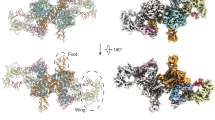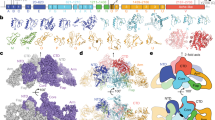Abstract
Fate of the nascent thyrolglobulin (Tg) molecule is characterized by multimerization. To establish the formation of Tg multimers, the partially unfolded/reduced Tg or deoxycholate-treated/ reduced Tg was subjected to protein disulfide isomerase (PDI)-mediated multimerization. Oxidized glutathione/PDI-mediated formation of multimeric Tg forms, requiring at least an equivalent molar ratio of PDI/Tg monomer, decreased with increasing concentration of reduced glutathione (GSH), suggesting the oxidizing role of PDI. Additional support was obtained when PDI alone, at a PDI/Tg molar ratio of 0.3, expressed a rapid multimerization. Independently, the exposure of partially unfolded Tg to GSH resulted in Tg multimerization, enhanced by PDI, according to thiol-disulfide exchange. Though to a lower extent, a similar result was observed with the dimerization of deoxycholate-pretreated Tg monomer. Consequently, it is implied that intermolecular disulfide linkage may be facilitated at a limited region of unfolded Tg. In an attempt to examine the multimerization site, the cysteine residue-rich fragments of the Tg were subjected to GSH-induced multimerization; a 50 kDa fragment, containing three vicinal dithiols, was multimerized, while an N-terminal domain was not. Present results suggest that the oxidase as well as isomerase function of PDI may be involved in the multimerization of partially unfolded Tg or deoxycholate-treated Tg.
Similar content being viewed by others
References
Bass, R., Ruddock, L. W., Klappa, P., and freedman, R. B., A major fractin of endoplasmic reticulum-located glutathione is present as mixed disulfides with protein.J. Biol. Chem., 279, 5257–5262 (2004).
Bradford, M. M., A rapid and sensitive method for the quantitation of microgram quantities of protein utilizing the principle of protein-dye binding.Anal. Biochem., 72, 248–254 (1976).
Chernoff, S. B. and Rawitch, A. B., Thyroglobulin structurefunction. Isolation and characterization of a thyroxinecontaining polypeptide from bovine thyroglobulin.J. Biol. Chem., 256, 9425–9430 (1981).
Cuozzo, J. W. and Kaiser, C. A., Competition between glutathione and protein thiols for disulphide-bond formation.Nature Cell Biol., 1, 130–135 (1999).
Darby, N. J., Freedman, R. B., and Creghton, T. E., Dissecting the mechanism of protein disulfide isomerase: catalysis of disulfide bond formation in a model peptide.Biochemistry, 33, 7937–7947 (1994).
De Crombrugghe, B., Pitt-Rivers, R., and Edelhoch, H., The Properties of Thyroglobulin. XI. The reduction of the disulfide bonds.J. Biol. Chem., 241, 2766–2773 (1966).
Delom, F., Lejeune, P.-J., Vinet, L., Carayon, P., and Mallet, B., Involvement of oxidative reactions and extracellular protein chaperones in the rescue of misassembled thyroglobulin in the follicular lumen.Biochem. Biophys. Res. Comm., 255, 438–443 (1999).
Delom, F., Mallet, B., Carayon, P., and Lejeune, P. J., Role of extracellular molecular chaperones in the folding of oxidized proteins. Refolding of colloidal thyroglobulin by protein disulfide isomerase and immunoglobulin heavy chain-binding protein.J. Biol. Chem., 276, 21337–21342 (2001).
Ellman, G. L., Tissue sulfhydryl groups.Arch. Biochem. Biophys., 82, 70–77 (1959).
Frand, A. R., Cuozzo, J. W., and Kaiser, C. A., Pathways for protein disulphide bond formation.Trends Cell Biol., 10, 203–210 (2000).
Freedman, R. B., Hawkins, H. C., and McLaughlin, S. H., Protein disulfide-isomerase.Methods Enzymol., 251, 397–406 (1995).
Freedman, R. B., Hirst, T. R., and Tuite, M. F., Protein disulphide isomerase: building bridges in protein folding.Trends Biochem. Sci., 19, 331–336 (1994).
Freedman, R. B.,Trends Biochem. Sci., 9, 438–441 (1984).
Gentile, F., Di Lauro, R., and Salvatore, G., in Endocrinology, In DeGroot, L. J., 3rd Ed., pp. 517–542, W. B. Saunders Co., Philadelphia, PA (1995).
Gentile, F., Pasquale, F., Mamone, G., Malorni, A., and Salvatore, G., Identification of Hormonogenic Tyrosines in Fragment 1218-1591 of Bovine Thyroglobulin by Mass Spectrometry. Hormonogenic acceptor Tyr-1291 and donor Tyr-1375.J. Biol. Chem., 272, 639–646 (1997).
Gilbert, H. F., Catalysis of thiol/disulfide exchange: singleturnover reduction of protein disulfide-isomerase by glutathione and catalysis of peptide disulfide reduction.Biochemistry, 28, 7298–7305 (1989).
Gilbert, H. F., Molecular and cellular aspects of thiol-disulfide exchange.Adv. Enzymol. Relat. Areas Mol. Biol., 63, 69–172 (1990).
Gilbert, H. F., Protein Disulfide Isomerase and Assisted Protein Folding.J. Biol. Chem., 272, 29399–29402 (1997).
Herzog, V., Bemdorfer, U., and Saber, Y., Isolation of insoluble secretory product from bovine thyroid: extracellular storage of thyroglobulin in covalently cross-linked form.J. Cell Biol., 118, 1071–1083 (1992).
Kim, P. S. and Arvan, P., Calnexin and BiP act as sequential molecular chaperones during thyroglobulin folding in the endoplasmic reticulum.J. Cell Biol., 128, 29–38 (1995).
Kim, P. S., Kim, K.-R., and Arvan, P., Disulfide-linked aggregation of thyroglobulin normally occurs during nascent protein folding.Am. J. Physiol. Cell Physiol., 265, C704-C711 (1993).
Klein, M., Gestmann, I., Bemdorfer, U., Schmitz, A., and Herzog, V., The thioredoxin boxes of thyroglobulin: possible implications for intermolecular disulfide bond formation in the follicle lumen.Biol. Chem., 381, 593–601 (2000).
Kuznetsov, G., Chen, L. B., and Nigam, S. K., Multiple Molecular Chaperones Complex with Misfolded Large Oligomeric Glycoproteins in the Endoplasmic Reticulum.J. Biol. Chem., 272, 3057–3063 (1997).
Laemmli, U. K., Cleavage of structural proteins during the assembly of the head of bacteriophage T4.Nature, 227, 680–685 (1970).
Malthiery, Y. and Lissitzky, S., Primary structure of human thyroglobulin deduced from the sequence of its 8448-base complementary DNA.Eur. J. Biochem., 165, 491–498 (1987).
Mercken, L., Simons, M.-J., Swillens, S., Massaer, M., and Vassart, G., Primary structure of bovine thyroglobulin deduced from the sequence of its 8,431-base complementary DNA.Nature, 316, 647–651 (1985).
Nigam, S. K., Goldberg, A. L., Ho, S., Rohde, M. F., Bush, K. T., and Sherman, M. Y., A set of endoplasmic reticulum proteins possessing properties of molecular chaperones includes Ca(2+)-binding proteins and members of the thioredoxin superfamily.J. Biol. Chem., 269, 1744–1749 (1994).
Pagani, M., Rabbri, M., Benedetti, C., Fassio, A., Pilati, S., Bulleid, N. J., Cabibbo, A., and Sitia, R., Endoplasmic Reticulum Oxidoreductin 1-Lβ (ERO1-Lβ), a Human Gene Induced in the Course of the Unfolded Protein Response.J. Biol. Chem., 275, 23685–23692 (2000).
Ruoppolo, M., Freedman, R. B., Pucci, P., and Marino, G., Glutathione-dependent pathways of refolding of RNase T1 by oxidation and disulfide isomerization: catalysis by protein disulfide isomerase.Biochemistry, 35, 13636–13646 (1996).
Author information
Authors and Affiliations
Corresponding author
Rights and permissions
About this article
Cite this article
Liu, XW., Sok, DE. Multimerization of bovine Thyroglobulin, partially unfolded or partially unfolded/reduced; Involvement of protein disulfide isomerase and glutathionylated disulfide linkage. Arch Pharm Res 27, 1275–1283 (2004). https://doi.org/10.1007/BF02975894
Received:
Issue Date:
DOI: https://doi.org/10.1007/BF02975894




